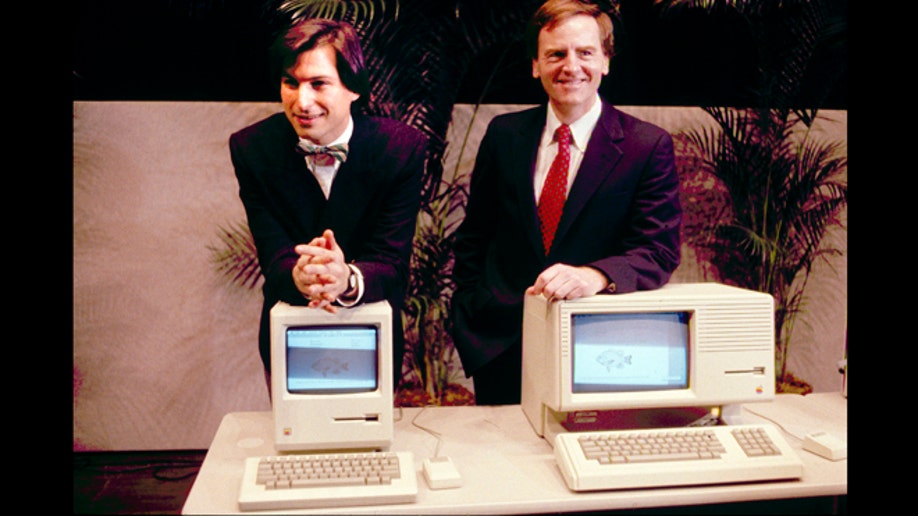Notable Macs over the years, from 1984 to the Pro
{{#rendered}} {{/rendered}}
This January 1984 photo shows Apple CEO Steven P. Jobs, left and President John Sculley presenting the new Macintosh Desktop Computer in January 1984 at a shareholder meeting in Cupertino, Calif. (AP Photo)

Jan. 23, 1984: The Apple Macintosh that was unveiled in Cupertino, Calif., 30 years ago. The main console contains a 32 bit microprocessor, a built-in 3 1/2-inch disk drive, a 9-inch display, 64k ROM and 128k RAM. (AP Photo)
March 28, 1984: The Mac's user-friendly approach to computing is now a fundamental part of all consumer electronics. The Mac was the first successful computer to incorporate a graphical user interface and a mouse, rather than require people to type in commands. The first Mac had a 3.5-inch floppy disk drive at a time when a 5.25-inch drive was the standard. The Mac used the smaller drive for practical reasons; the larger floppies weren't reliable. (AP Photo/Paul Sakuma)
July 8, 1998: Do computers have to look boring? Not according to Steve Jobs. In 1998, Apple came out with its first iMac. PCs at the time were typically housed in uniform, beige boxes. The first iMacs looked more like TVs and came in a variety of colors over the years. At one point, Jobs even teased consumers to collect all five. Later iMacs would sport other notable designs, including ones shaped like a sunflower. The iMacs were also famous for ditching floppy drives in favor of CDs and incorporating USB ports -- now standard in computers. (AP Photo/Apple)
July 21,1999: Steve Jobs holds up one of the company's consumer laptops called an "iBook" after his keynote address at the Macworld Expo in New York. The iBook G3 in 1999 was among the first laptops to come with a Wi-Fi card. It was so new that Jobs used a hula-hoop on stage to show it off. (AP Photo/Bebeto Matthews)
July 19, 2000: Steve Jobs shows off the inside of the Power Macintosh G4, an 8-inch cube computer, during his keynote address at MacWorld Expo. The Power Mac G4 Cube in 2000 was praised for its design, even though it didn't sell well. The entire computer fit into a cube measuring 7 inches on each side. A crystal-clear casing made the Cube slightly larger, but it also made the device memorable. (AP Photo/Richard Drew)
Oct. 20, 2010: In 2008, Apple started selling the MacBook Air, notable for being thin and light. In introducing the device, Jobs stuffed one into a standard-sized manila office envelope. Apple pulled this off by eliminating the CD drive and the wired Ethernet port, figuring that people could download files from the Internet over Wi-Fi. Later Airs and MacBook Pros would stay thin and light by also ditching the traditional, spinning hard drive in favor of solid-state memory, the kind used in phones and tablets. (AP Photo/Tony Avelar)
June 10, 2013: Last month marked the debut of Apple's newest Mac, described in this photo by senior vice president Phil Schiller during a San Francisco conference. Aimed at professionals, the Mac Pro has more computer power than most consumers would need, squeezed into a black, cylinder-shaped case that is about one-eighth the volume of the previous, boxy model. The original Mac had 128 kilobytes of memory. The Pro starts at 12 gigabytes, or more than 90,000 times as much. (AP Photo/Eric Risberg)
